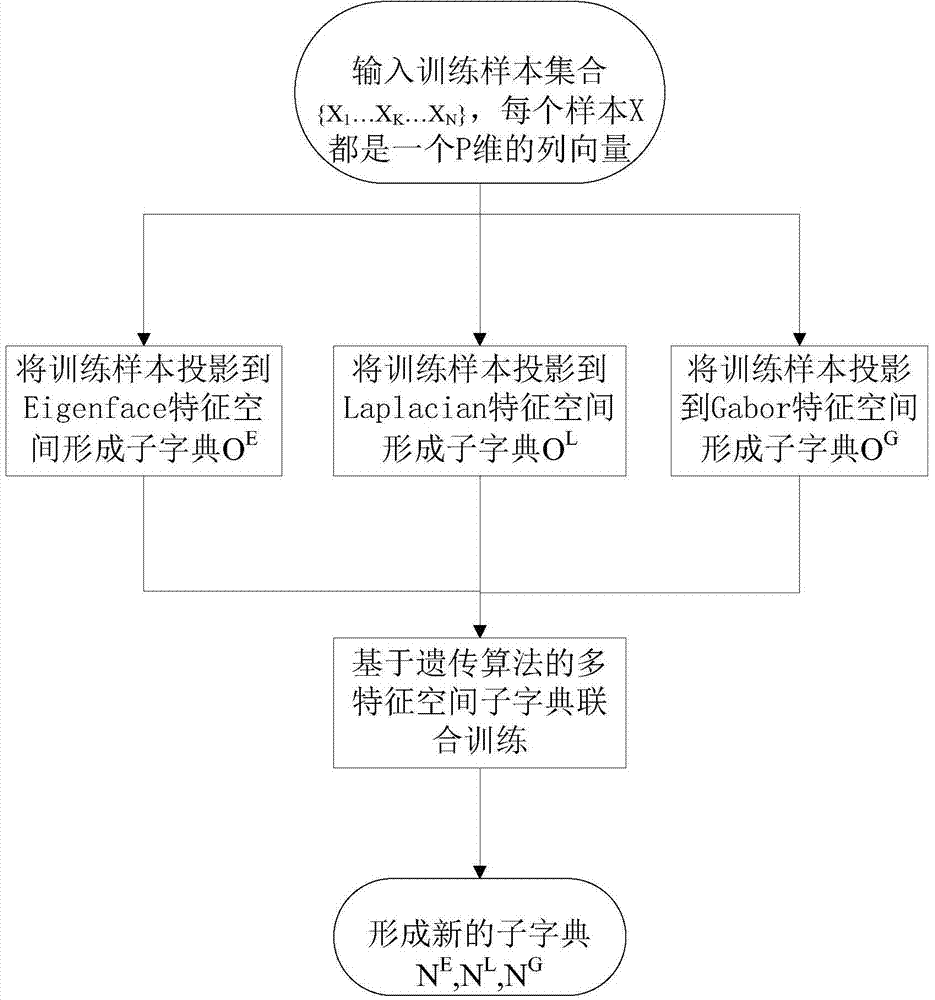Joint training method of sub-dictionaries in multiple characteristic spaces and for face recognition
A feature space and face recognition technology, applied in the field of image recognition, can solve problems such as poor generalization ability and inability to make full use of features
- Summary
- Abstract
- Description
- Claims
- Application Information
AI Technical Summary
Problems solved by technology
Method used
Image
Examples
Embodiment Construction
[0031] In order to make the purpose of the present invention, implementation scheme and advantage clearer, the specific implementation of the present invention is described in further detail below, and the concrete process of the present invention is as follows figure 1 shown.
[0032] (1) The original training sample {X 1 …X N} projected to the Eigenface feature space to form a sub-dictionary O E , the sample vector expression after projection in the feature space is Y K =W PCA T x K ,X K is a training sample vector, W PCA It is the matrix composed of the bases of the Eigenface feature space, and the set {Y 1 ...Y K ...Y N} is the sub-dictionary O E .
[0033] (2) The original training sample {X 1 …X N} projected to the Laplacianface feature space to form a sub-dictionary O E , the sample vector expression after projection in the feature space is Y K =W T x K ,W=W PCA W LPP , W PCA Indicates that principal vector analysis is first performed on the original ...
PUM
 Login to View More
Login to View More Abstract
Description
Claims
Application Information
 Login to View More
Login to View More - R&D
- Intellectual Property
- Life Sciences
- Materials
- Tech Scout
- Unparalleled Data Quality
- Higher Quality Content
- 60% Fewer Hallucinations
Browse by: Latest US Patents, China's latest patents, Technical Efficacy Thesaurus, Application Domain, Technology Topic, Popular Technical Reports.
© 2025 PatSnap. All rights reserved.Legal|Privacy policy|Modern Slavery Act Transparency Statement|Sitemap|About US| Contact US: help@patsnap.com



